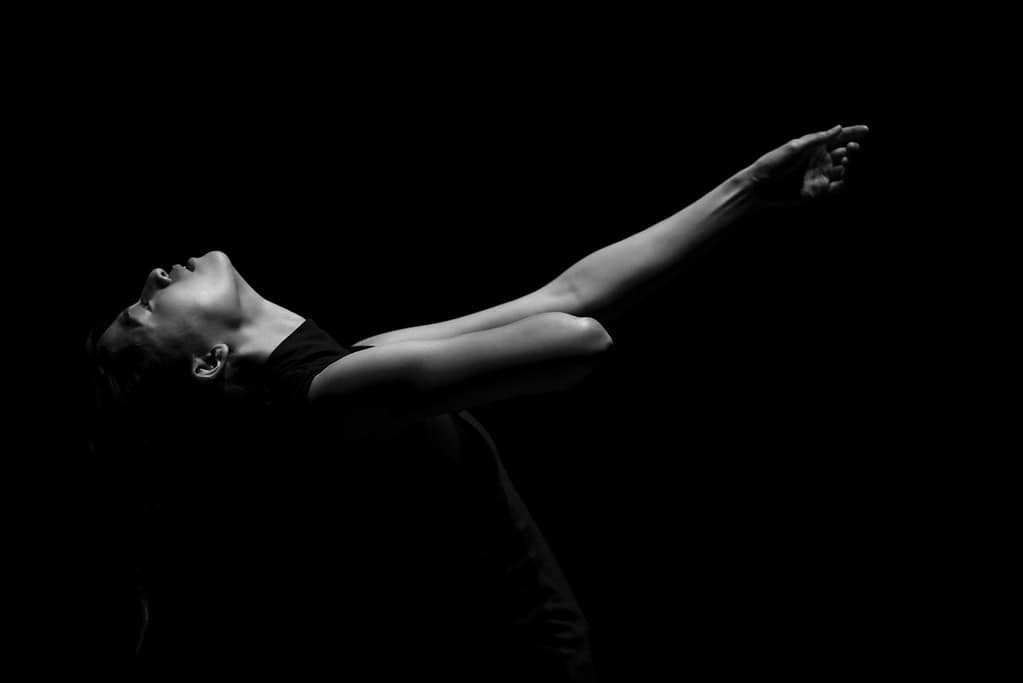How to Improve Your Ballet Posture – The Best Advice
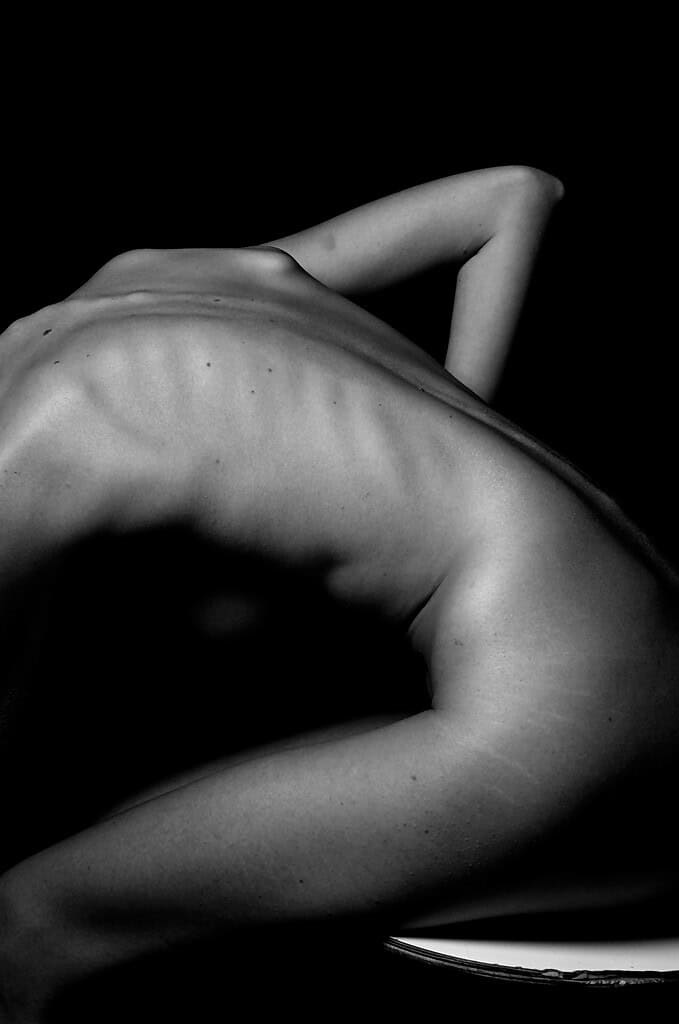
Is it ever too late to improve your ballet posture?
Not at all!
Most people can recognise ballet dancers due to their posture. It’s the way dancers are taught to carry themselves, and the ability to stand tall.
Trust me, you could pick my twin sister and I apart from our postures alone!
Ballet dancers possess a certain aura, characterised by beauty, elegance, and grace.
The good news is that good posture isn’t just for dancers; it’s for everyone. Anyone can improve their posture with a little awareness, practice, and conditioning.
In this blog post, I’ll share my best advice to help you improve your ballet posture.
WHAT IS BALLET POSTURE?
Ballet posture refers to the ideal alignment of the body, particularly the spine, and allows dancers to correctly hold and support their bodies for the physical demands of dance.
But to understand what good posture means, we first need to understand that posture involves the whole body, from the head down to the toes.
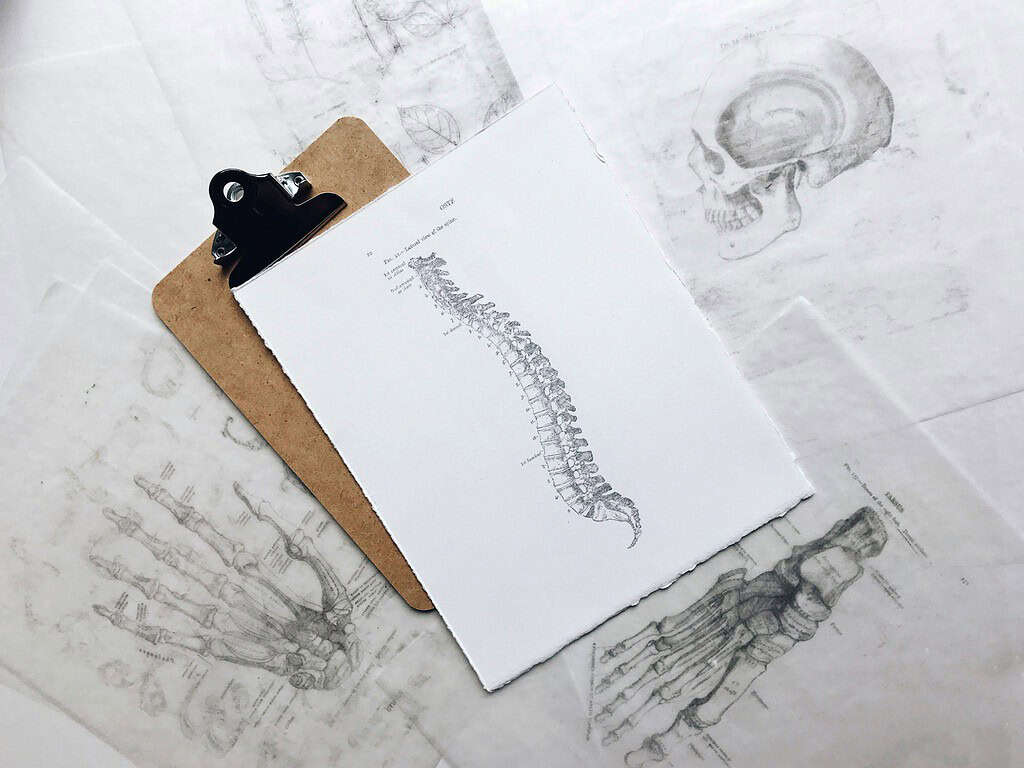
IMPORTANCE OF BALLET POSTURE FOR DANCERS
Ballet posture is more than just looking the part.
It’s important for:
You might not realise it, but that unwanted arch in your spine, or those rounded shoulders, could be putting pressure on your neck, hips, and knees.
Everything is connected!
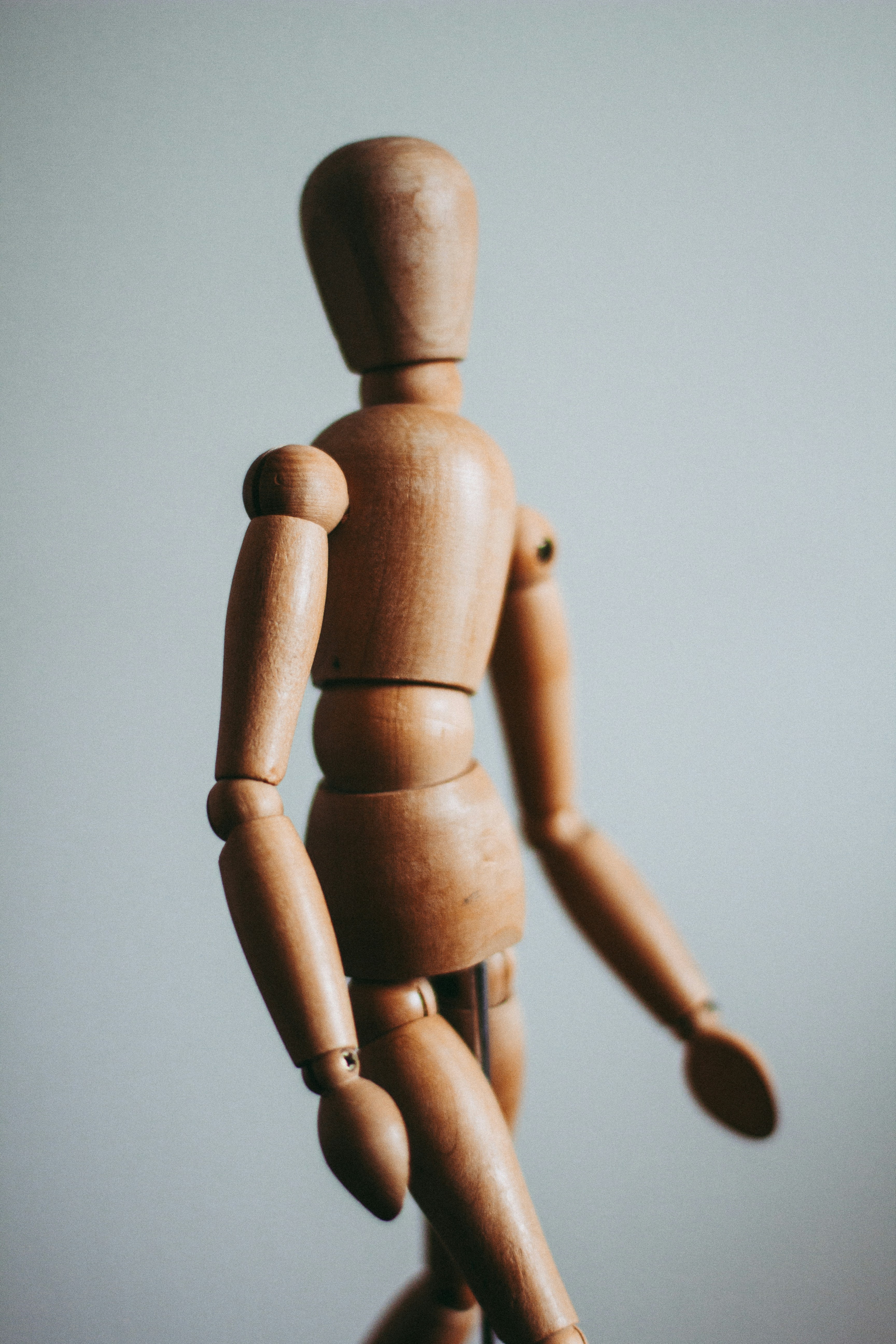
Just remember, when everything is properly aligned and functioning together, dancers can achieve a beautiful balance and a body capable of moving with ease.
Sounds great, right?
As a bonus, the way you carry yourself significantly influences how others perceive you.
When you hold your head high and stand tall, you radiate confidence and strength, an energy and poise that can be advantageous during ballet auditions.
KEY ELEMENTS OF BALLET POSTURE
Here are some key elements to focus on to achieve the ideal alignment and posture for dance.
HEAD POSITION AND ALIGNMENT
When holding the head, it’s important to maintain the natural curve of the neck.
Avoid tucking the chin in too much or sticking the head forward excessively.
Instead, focus on elongating your neck and visualise your head sitting effortlessly on top.
SHOULDERS AND UPPER BODY POSTURE
The shoulders should be pressed down and back, while the chest remains open. You should continuously lift up and out through the upper body.
Achieving this can be challenging, as rounded shoulders are more common than you might expect.
This can be due to the structure of your bones and joints or muscle imbalances or tightness.
However, there are numerous exercises and stretches that dancers can do to help correct this issue (some of which are highlighted below).
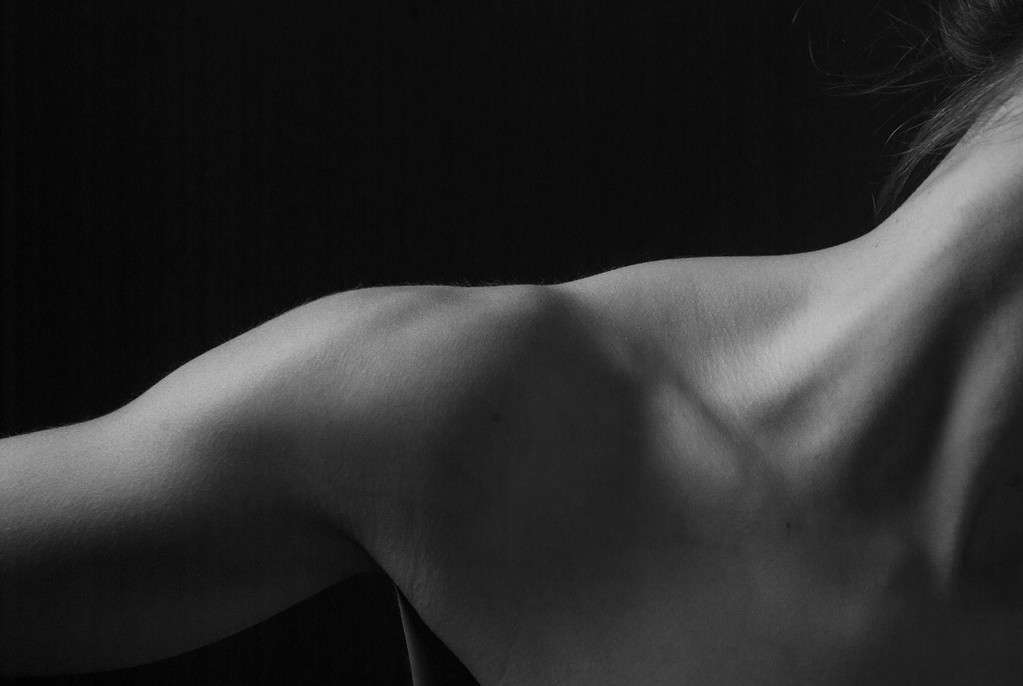
CORE ENGAGEMENT AND STABILITY
To effectively engage the core and keep the ribs from splaying out, it’s essential to target the lower and deep abdominals, along with the obliques.
It’s not just those superficial abdominal muscles (yes, I’m talking about you, 6 pack!).
Pilates is particularly effective in training these muscles and can offer significant benefits for ballet dancers.
With proper conditioning, your core can become a powerhouse that provides support for various movements, enhancing your balance, and improving your overall body coordination and function.
HIP ALIGNMENT AND PLACEMENT
Maintaining a neutral pelvis, neither tilted forward nor dramatically tucked under can help dancers maintain alignment with their spine.
While dancers are taught to engage their deep rotator muscles and gently tuck the glutes under, it’s important to avoid extremes.
Achieving the right balance allows your muscles to work effectively, making turnout easier to maintain and achieve.
LEG AND FOOT POSITIONING
Dancers’ legs vary in shape and form, so it’s crucial to understand your body and train accordingly.
You might have:
As a result, you’ll need to train your muscles differently to avoid unwanted pressure on the knees and ankles or to gain the necessary strength for full leg extension and those beautiful ballet lines.
While hyperextension can enhance the aesthetic line, it has its own challenges, demanding a heightened focus on posture and balance.
Alignment is crucial, and the knees should always track over the toes, particularly when landing from allegro.
Ensure that the weight is evenly distributed on the balls of the feet, rather than being pulled back into the heels.
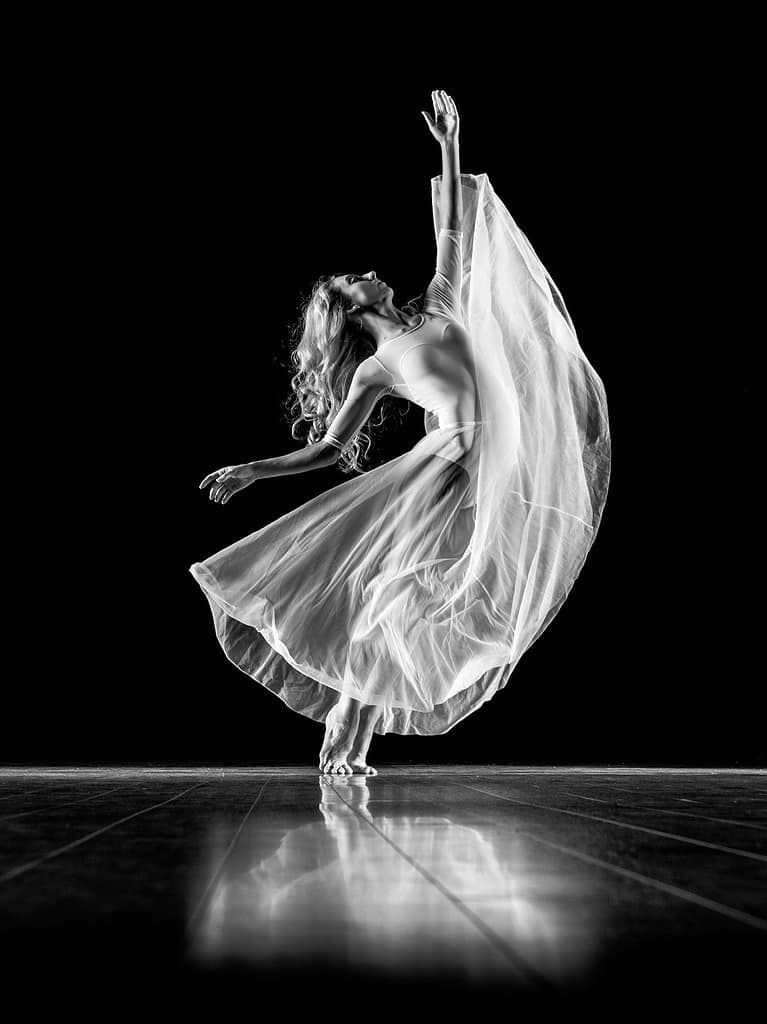
COMMON BALLET POSTURE MISTAKES AND HOW TO AVOID THEM
Watch out for these common ballet postural mistakes.
ROUNDED SHOULDERS
While you may not resemble the Hunchback of Notre Dame with rounded shoulders, it’s still not an ideal posture for ballet or everyday life.
Rounded shoulders occur when the shoulders curve forward instead of being held back and down, leading to a hunched appearance.
To improve shoulder mobility and posture, incorporate wall slides into your daily routine.
Also try to strengthen the muscles around your scapulas with exercises like reverse flys or rows, and work your rotator cuff muscles.
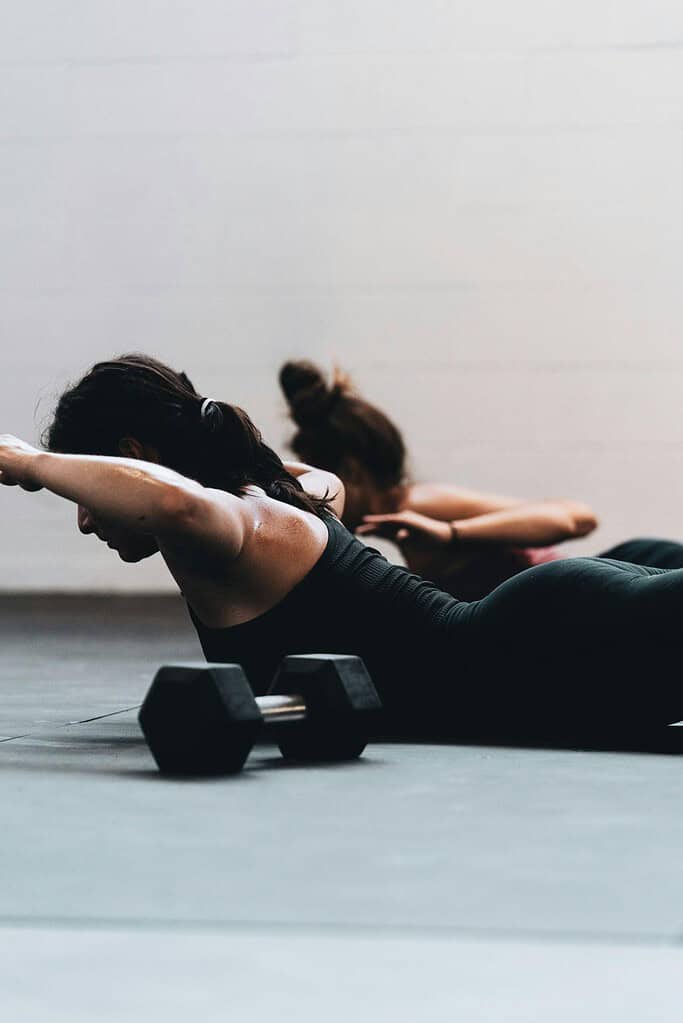
Last but not least, don’t forget to stretch and massage regularly.
RIBS OUT
One common postural mistake among dancers is allowing the ribs to protrude or ‘flare out’, disrupting alignment and putting unnecessary strain on the back and shoulders.
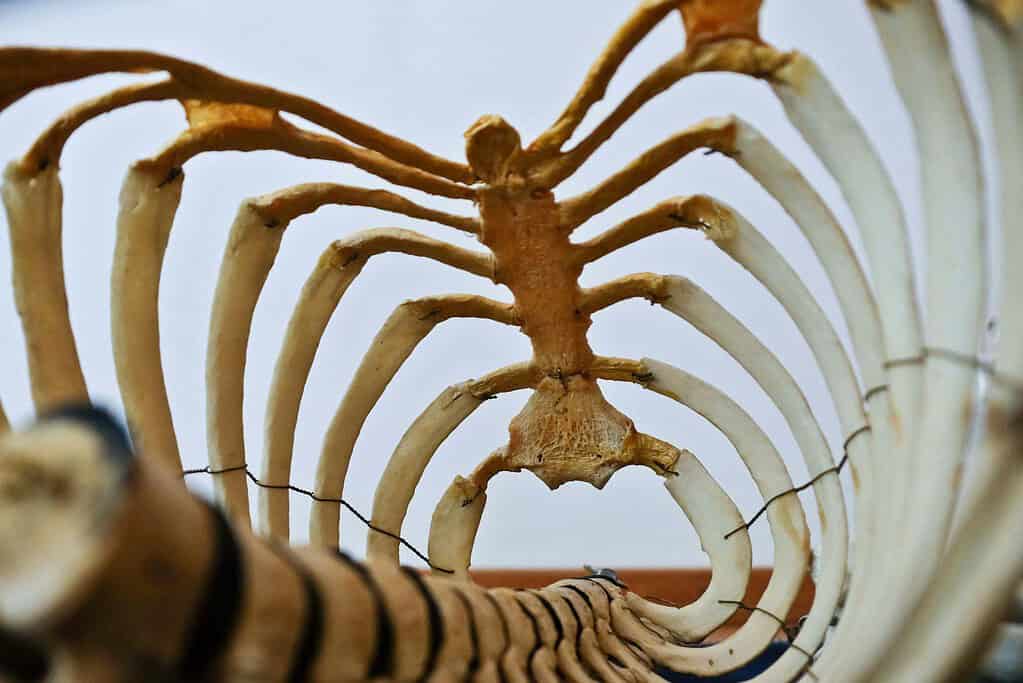
To prevent this, it’s important to incorporate exercises that strengthen and engage the entire core, such as planks, dead bugs, and pelvic tilts.
A strong and engaged core is vital when landing from jumps and lifts (for male dancers).
TUCKED PELVIS
A tilted pelvis whether anterior (forward) or posterior (backward), disrupts the natural alignment of the spine.
This can lead to lower back pain due to strain on the muscles in that area, as well as hinder core engagement and restrict hip mobility.
I recommend incorporating exercises like:
WEIGHT ON THE HEELS
When learning to dance, it may feel natural to keep your weight on your heels.
However, dancers need to keep their weight centred and off their heels to avoid pulling back in the legs.
This is especially important for dancers with hyperextended legs, as it helps them use their muscles properly rather than relying on their swayed legs to stretch.
By keeping the weight on the toes:
A simple way to check your weight distribution is to see if you can lift your heels off the floor without adjusting your body position.
If you can do this easily, you’re likely keeping your weight properly centred.
If not, you may need to regularly monitor and adjust your weight distribution throughout your dancing.
Remember to use your time at the barre efficiently to ensure proper alignment, as you might struggle with balance once you move into the centre.
TOP TIPS TO PERFECT YOUR BALLET POSTURE
Here are my top tips to perfect your ballet posture.
TIP 1 – VISUALISE YOUR POSTURE
When performing a plié or grand plié, visualise yourself sliding down and up against a wall, maintaining a straight back and avoiding tucking or sticking out your glutes.
To practise this, you can physically stand against a wall to see and correct your body alignment.
This visualisation can help maintain correct spinal and pelvic posture.
Once you have mastered this concept with pliés, your position for pirouettes and allegro will become second nature.
TIP 2 – REPLACE YOUR CHAIR FOR A STABILITY BALL
Sitting on a stability ball effectively trains and strengthens your postural muscles by requiring your body to maintain proper alignment and posture.
This also engages your core muscles to stabilise and balance yourself.
Using a stability ball helps you quickly notice when your posture starts to weaken, making it a valuable tool for training your body at home.
TIP 3 – STRETCHING IS JUST AS CRUCIAL AS STRENGTHENING
While adding exercises to your routine can address many issues, relieving tightness and stiffness through stretching is equally important for maintaining good posture.
After a day of rehearsals, remember to give your body some TLC with a foam roller massage or gentle stretching.
Downward Dog and Child’s Pose are some fantastic stretches!
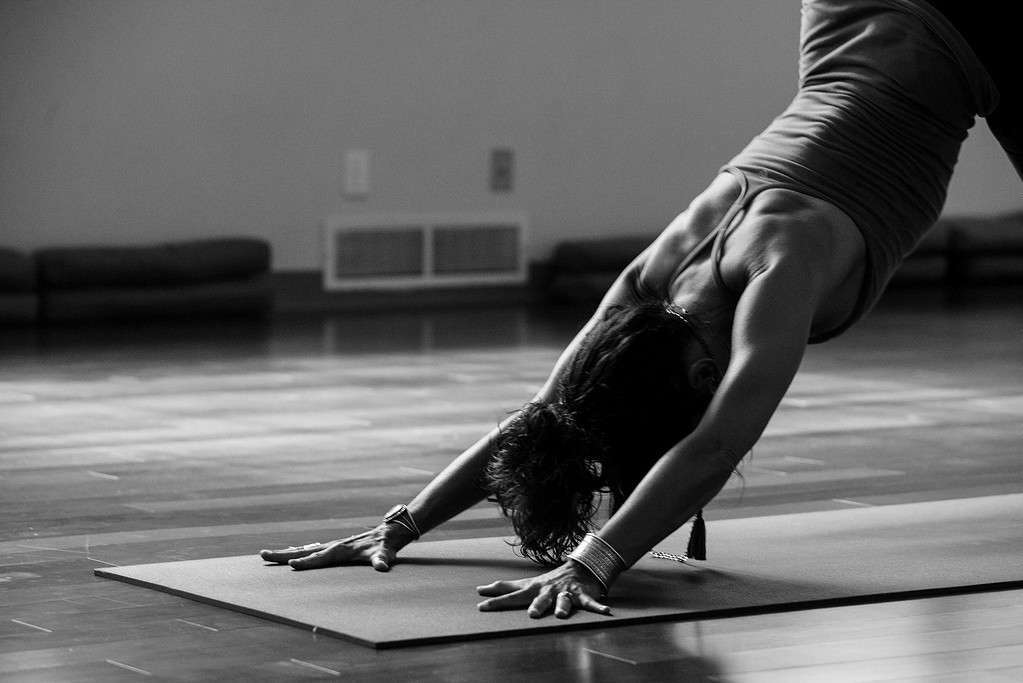
BALLET POSTURE EQUIPMENT AND TOOLS
Here are three essential items that are commonly used to improve ballet posture, and items that I used in my career as a professional dancer.
ITEM 1 – THERABAND
Therabands offer valuable benefits for enhancing posture.
Whether you’re performing shoulder retractions, postural rows, or chest openers, therabands are a cheap and convenient tool that can easily be carried around in your dance bag.
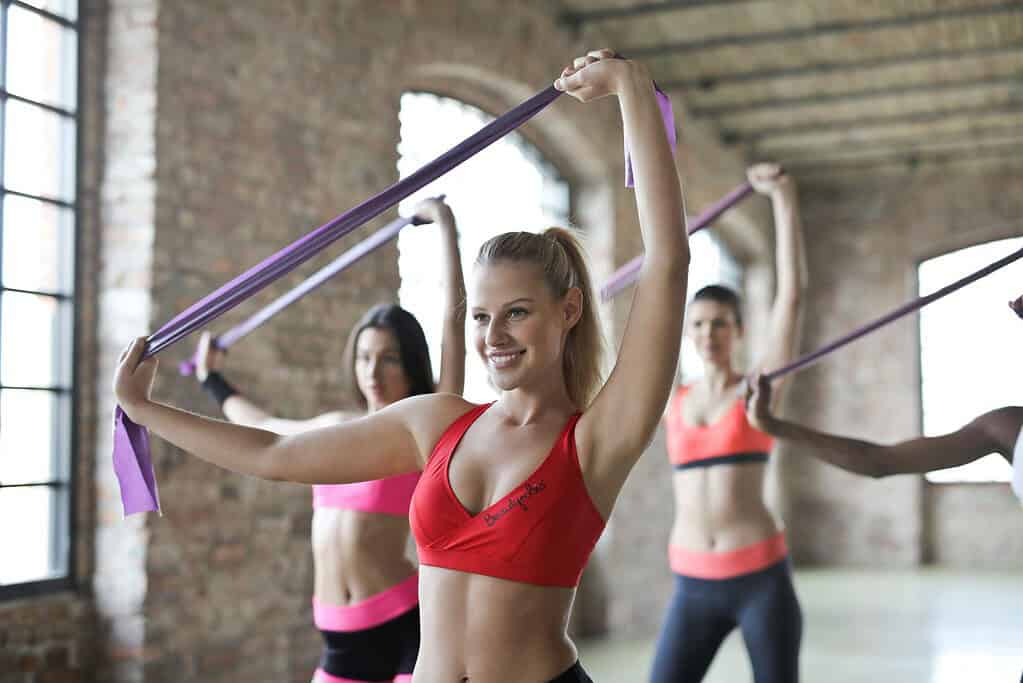
ITEM 2 – FOAM ROLLER
Foam rollers can be used for self-myofascial release (aka soft tissue massage, although it doesn’t always feel soft while you’re doing it!).
This is a great item to alleviate muscle tightness and tension, particularly in areas including the back, shoulders, and hips.
Rolling out tight muscles or those trigger points can help improve flexibility and range of motion, which are important for maintaining good posture.
ITEM 3 – BALLET BARRE
Whether you have a home ballet barre or just use the one from the studio, it’s a fantastic piece of equipment for enhancing posture.
The barre offers additional support and stability during exercises, enabling you to concentrate on maintaining proper body alignment.
Utilise the barre from the start of your class and pay close attention to your body positioning from the get-go.
BALLET POSTURE FAQs
IS BALLET POSTURE HEALTHY?
Ballet posture is highly beneficial for your body. Like Pilates, which aims to improve alignment and posture while toning muscles, ballet offers similar advantages.
These include better spinal and pelvic alignment, a stronger body (particularly the core and back), reduced pain, and enhanced body awareness.
HOW CAN I AVOID SLOUCHING MY SHOULDERS WHILE DANCING?
Avoid slouching your shoulders while dancing, and incorporate additional upper body conditioning into your routine.
Exercises such as rows, reverse flys and shoulder retractions (which pull the shoulder blades down and together) can strengthen the muscles responsible for maintaining good posture.
In addition to strengthening, remember to stretch your chest muscles to reduce tightness that can pull your shoulders forward.
Constantly check your shoulder position while dancing; it’s easy to get distracted during class and rehearsals, use the mirror to correct any adjustments and frequently remind yourself to pull your shoulders down and back.
CAN POOR BALLET POSTURE LEAD TO INJURIES?
Yes. Unfortunately, poor ballet posture can lead to incorrect muscle use and muscle imbalances, leading to injuries that can affect both the back and the entire body.
HOW CAN I PRACTISE GOOD BALLET POSTURE AT HOME?
Proper posture isn’t solely for ballet but should be practised in everyday activities such as sitting and walking.
Your home is the ideal setting to test and refine your posture.
Next time you’re eating dinner or going for a walk, observe how you’re holding your body.
Are you slouching? Are your shoulders hunched forward?
By being mindful of your posture in daily activities, you can work towards maintaining better alignment and overall physical health.
SHOULD I USE A POSTURE CORRECTOR FOR BALLET PRACTISE?
While posture correctors can provide temporary support and reminders for proper alignment, relying solely on them during ballet practice may not be ideal.
It’s important to develop intrinsic strength and body awareness to maintain good posture without external aids.
Instead of depending on a posture corrector, focus on strengthening the muscles that support good posture through targeted exercises and mindful practice.
HOW CAN I MAINTAIN GOOD BALLET POSTURE DURING LONG REHEARSALS?
Posture can be trained to become a habit. Dancers aim to develop muscle memory so that proper alignment becomes second nature.
During long rehearsals, when your body is tired, it’s crucial not to let your foundation slip.
As your muscles begin to fatigue, it’s important to constantly remind yourself and make corrections if you notice you’re compensating or your posture is declining.
Key areas to focus on are your shoulders, ribs, and pelvis.
CAN WEARING THE RIGHT BALLET ATTIRE IMPROVE MY BALLET POSTURE?
Yes, wearing the right ballet attire can improve your ballet posture.
Properly fitting leotards, tights, and pointe shoes allow for greater freedom of movement, eliminating the uncomfortable feeling of constriction and restraint.
Additionally, when you wear a leotard that makes you feel great, you’ll often stand taller and exude more confidence.
When you feel good and comfortable, your body reflects it in your posture.
WRAP UP
Maintaining correct posture is essential for dancers to optimise their performance and prevent injuries.
Proper alignment, from the head down to the toes, ensures efficient movement, balance, and stability.
Through consistent practice, conditioning, and mindful awareness, dancers can transform their bodies and movements and work towards achieving a strong and graceful presence both on and off the stage.
By prioritising good posture, in and out of the studio, dancers can improve the aesthetic quality of their movements, and ideally increase longevity in their dance careers.
It’s never too late to start!
